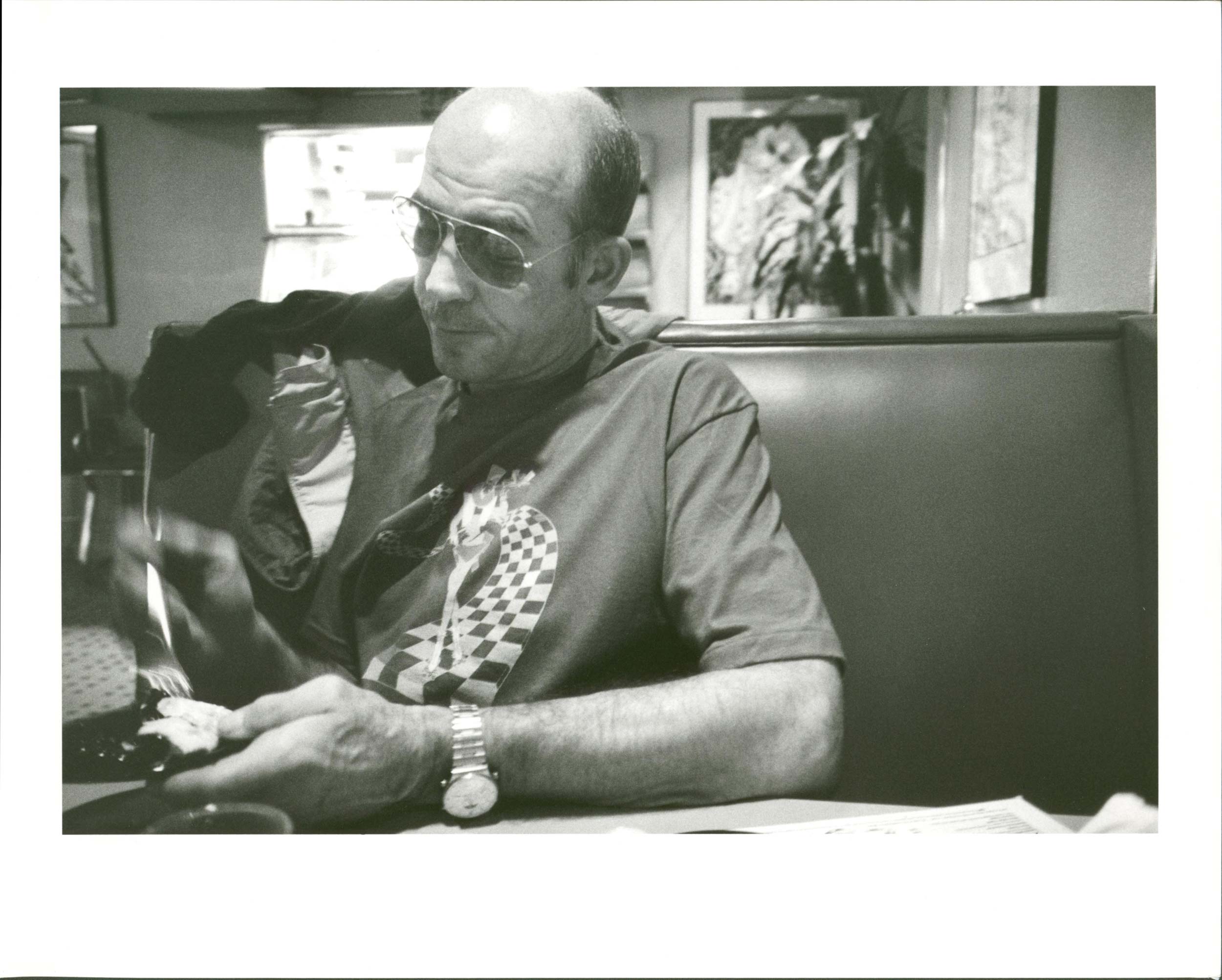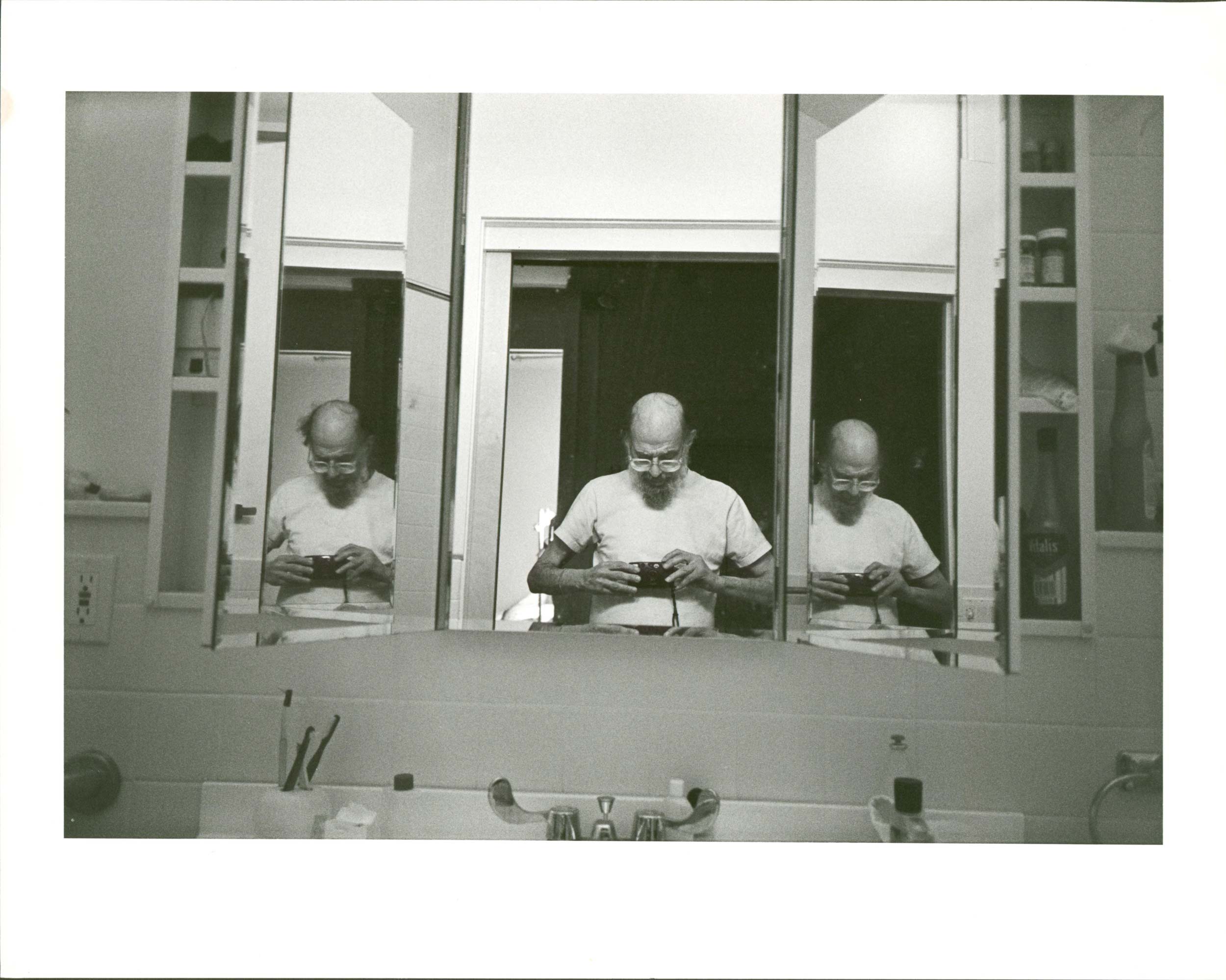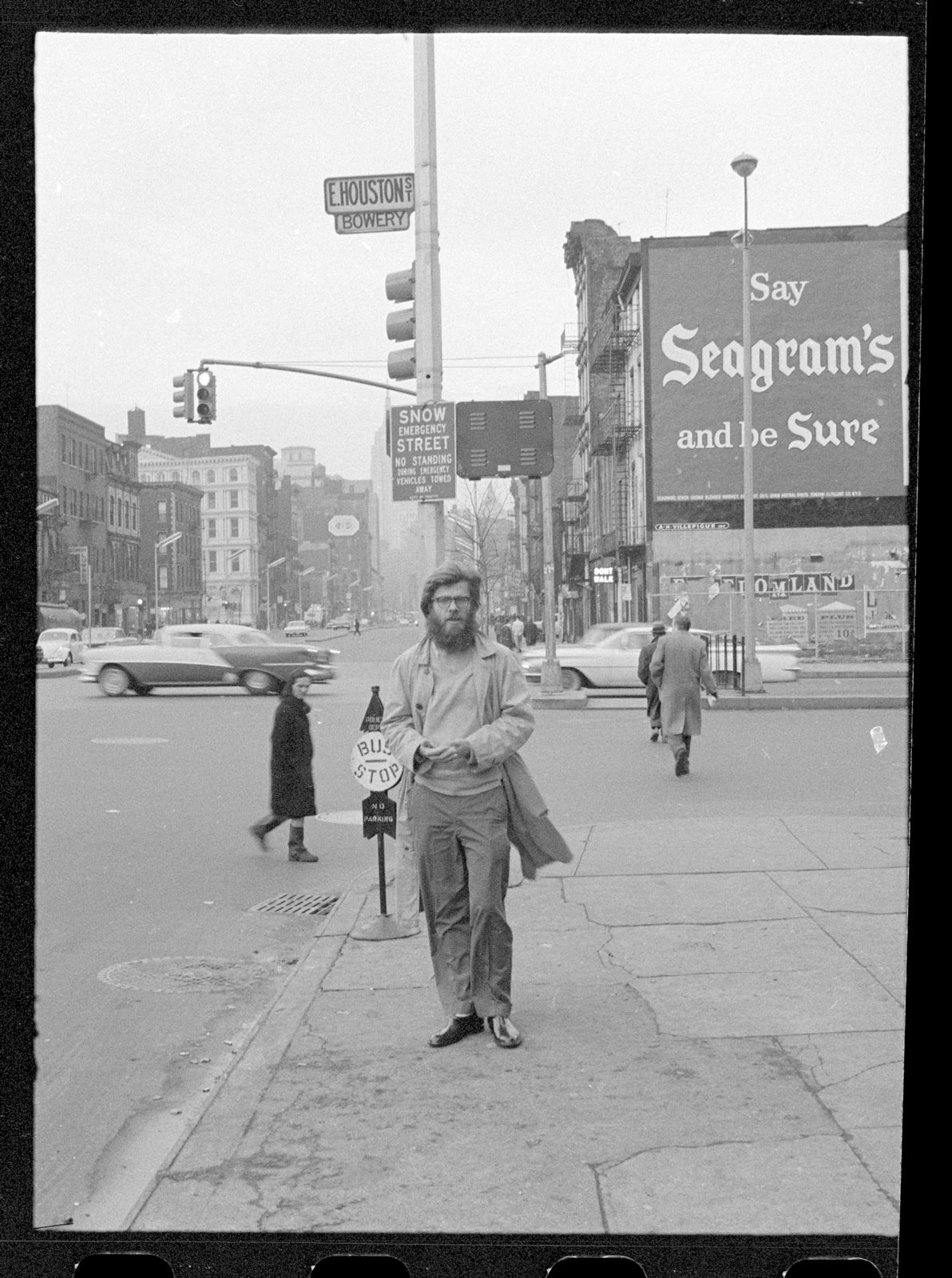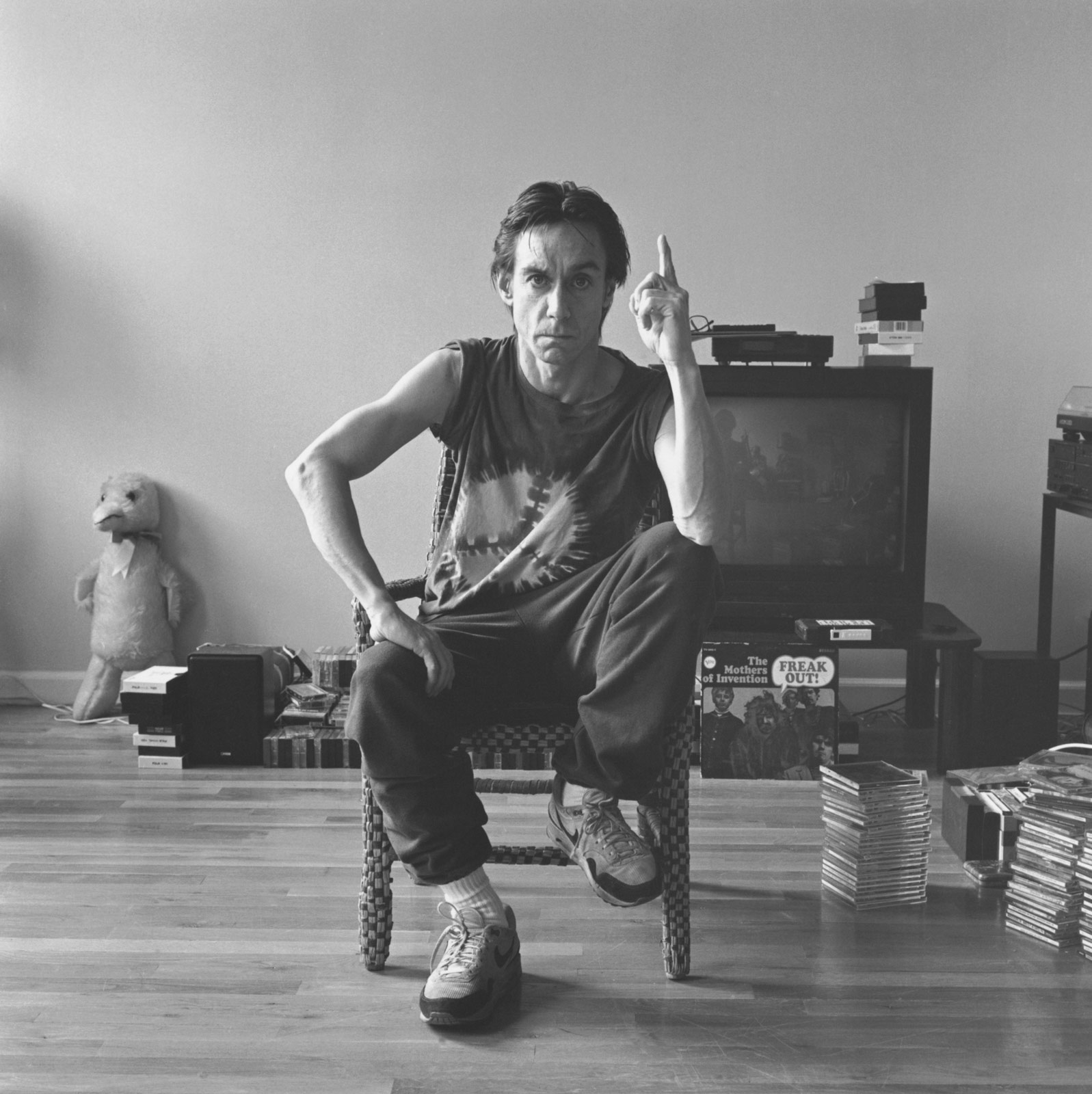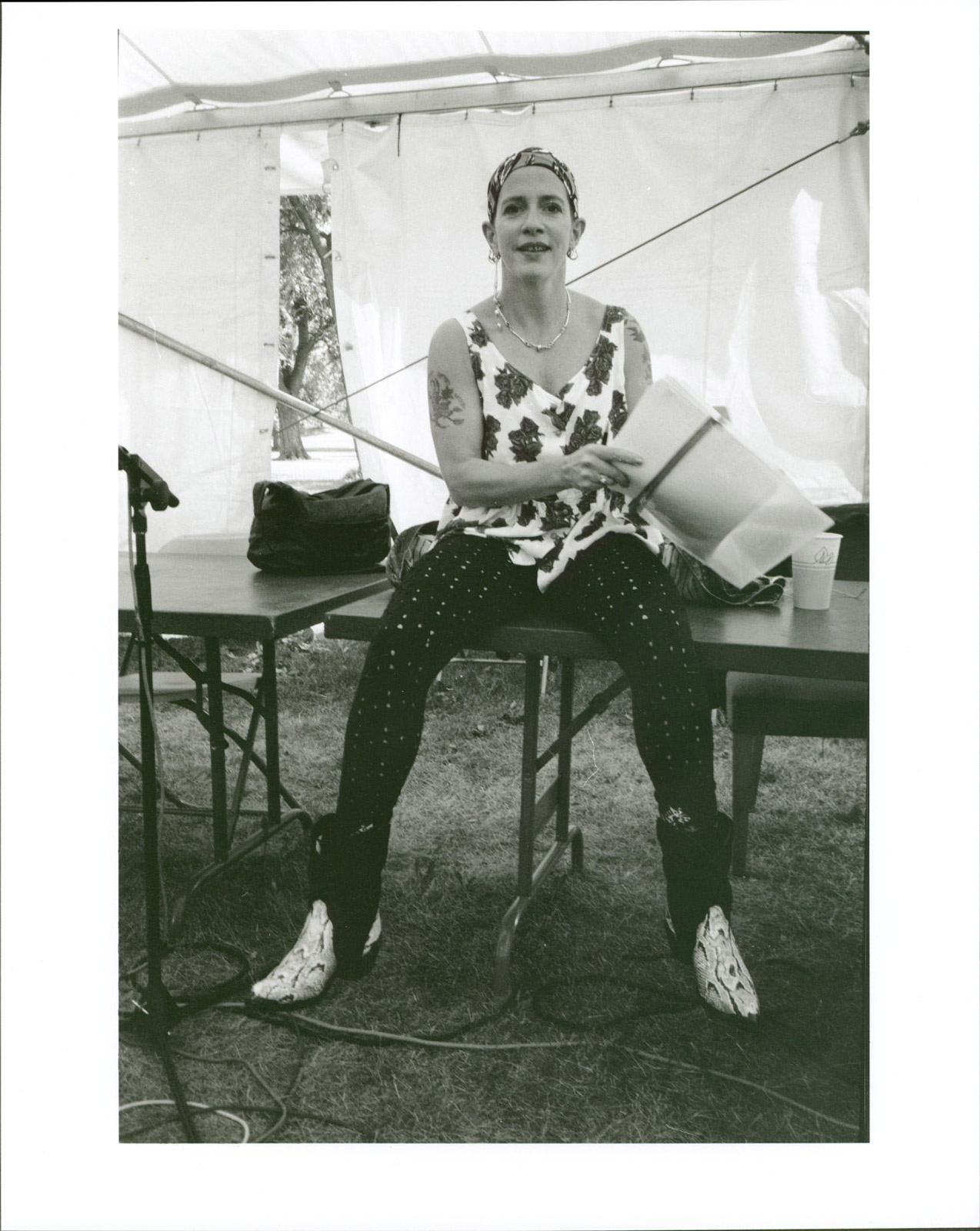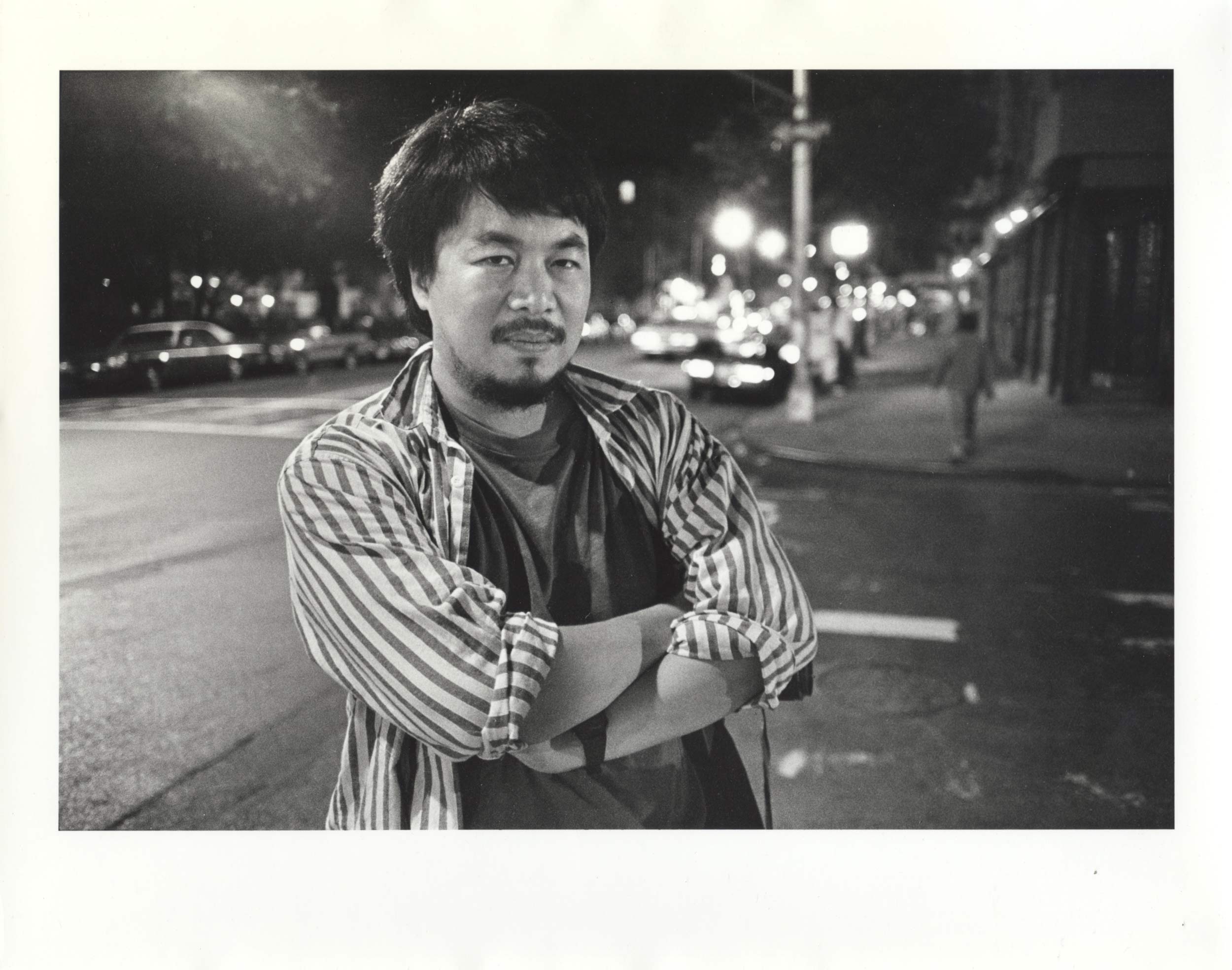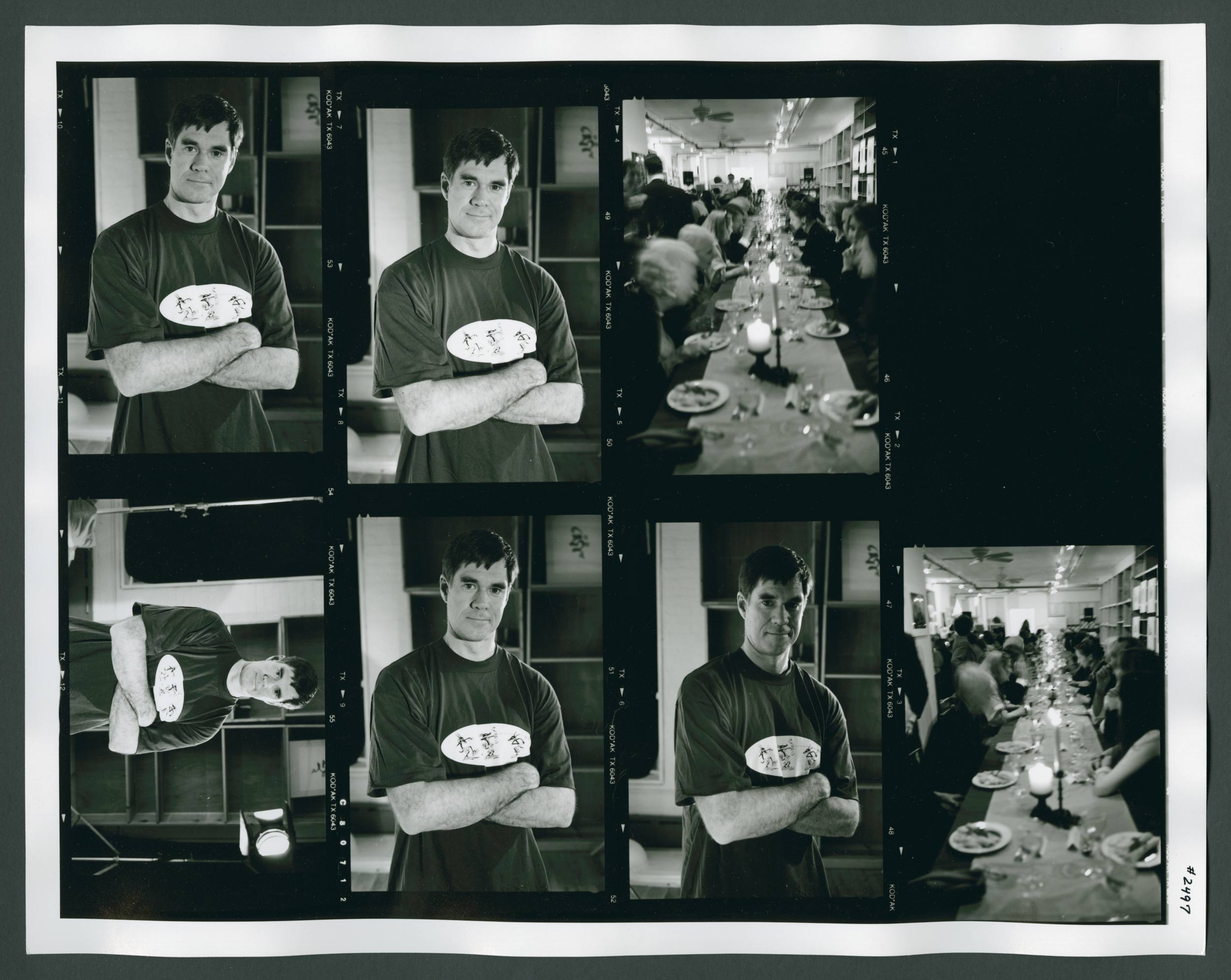For Document’s Spring/Summer 2023 issue, the Beat poet is recontextualized through his own lens, portraiting the likes of Iggy Pop, Gus Van Sant, William S. Burroughs, Kathy Acker, and Ai Weiwei
“The only thing that can save the world is the reclaiming of the awareness of the world,” Allen Ginsberg once observed. Though his words remain revealing and irrevocably influential, his prints reveal a more unvarnished picture of his person—a straightforward rendering of the awareness which he held so dear. Untainted by technicalities (many of his images were taken on a $13 Kodak), Ginsberg’s photographic practice was instinctual.
His subjects were often of his own creative class: William S. Burroughs in a sunken chair, a shadow cast over his serious gaze; Kathy Acker on the cusp of verbalizing a thought, her patterned legs dangling off a tabletop; Hunter S. Thompson with his hand on a fork, diving into some sort of delicacy that’s occupying his attention. These images offer a glimpse at the grandiosity that Ginsberg ascribed to his subjects, their immensity obvious to him, even in the smallest of moments. “He really felt his friends were angels—beautiful or hideous—and the act of photographing them was somehow sacred,” remarks Peter Hale, who acted as Ginsberg’s office assistant, then as archivist for his photographs and co-manager of his estate. “This elevation of his circle to a kind of sainthood, [this recognition of] their genius, helped form that bond that we see as the Beat Generation.”
Ginsberg is firmly etched into history as a saint himself: for his artful vulgarity and political prowess and spiritual sensibilities and undying agitational comportment, each the product of an all-consuming obsession with understanding. The curiosity that drove Ginsberg to picture-taking also rendered an intimacy with his subjects, his fascination with them observably genuine; “He mentioned that he liked ‘The Undefeated,’” musician Iggy Pop remembers. “No one ever noticed that one, but he did.” Ginsberg’s presence behind the camera is visible in the demeanor of his subjects—absolved of insecurity and the guises it breeds.
Hunter S. Thompson after a reading at Chautauqua, The Last American Diner, Boulder, Colorado, 1989.
Left: Ginsberg’s last self-portrait, New York, 1997. “He was fascinated with self-portraits and took them throughout his life. He didn’t have a favorite mirror. If he did, it was hotel rooms, which had more elaborate ones—usually several—so he could play with multiple reflections. This one is the bathroom at the loft he’d just renovated. [He] only lived [there for] four months before he died, so he only got a few.” — Peter Hale
Right: Peter Orlovsky, “returned from India,” Houston Street & Bowery, New York, 1963.
Left: Iggy Pop, New York, 1990. “A brief visit from Allen at Christodora House. He wanted to know how much I paid for the flat. I told him, and we took the photo.” — Iggy Pop
Right: Kathy Acker, Naropa University, Boulder, Colorado, 1991.
Ai Weiwei, New York. “This photograph was taken at the corner of Tompkins Square Park. At the time, he and I were photographing the protests in the area. As a resident of the neighborhood, Allen was also an observer there. We happened to cross paths, and he expressed interest in taking a photo of me. You can see that I still had my camera, tucked away behind me.” —Ai Weiwei
William S. Burroughs, New York, 1953. “William S. Burroughs looking serious, sad lover’s eyes, afternoon light in the window, cover of just-published Junky propped in shadow abover right shoulder, Japanese Kite agains Lower East Side’s hot water flat’s old wallpaper. He’d come up from South America & Mexico to stay with me editing Yage Letters & Queer manuscripts.” — Ginsberg
Left: Gus Van Sant, Ginsberg’s loft, New York, 1996. “This is a photo Allen took of me while we were perhaps making the ‘Ballad of the Skeletons’ video in his new loft, in a building that was either owned by, or the studio of, Larry Rivers.
We met during a trip to Princeton, giving lectures at the same time. Our connection was through William S. Burroughs and James Grauerholz, who had us share a limo ride. Allen saw that I had a guitar and asked me—since he had hurt his hand and couldn’t play his harmonium—to accompany him on-stage during his reading. He taught me the songs, and I played along with his singing at the end of the evening appearance.” — Gus Van Sant
Right: Alene Lee, New York, 1953. “W.S. Burroughs and Alene Lee, rooftop rear East 7th Street near Tompkins Park, Manhattan, Fall 1953. Alene typed collaged manuscripts as Bill & I assembled his Yage & Queer letters.” — Ginsberg



